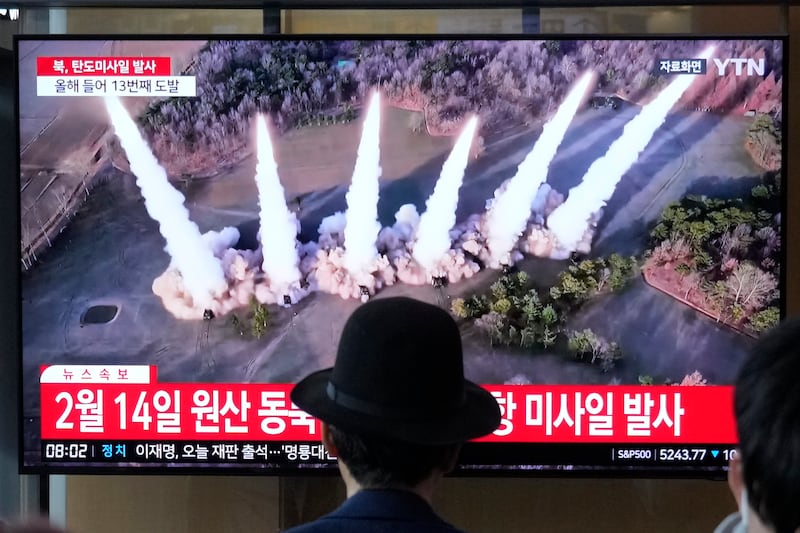North Korea on Tuesday test-fired a suspected intermediate-range ballistic missile towards waters off its eastern coast, South Korea’s military said.
South Korea’s Joint Chiefs of Staff said the missile was launched from an area near the North Korean capital, Pyongyang, but it did not immediately confirm how far the weapon flew.
The North had said last month that it tested a solid-fuel engine for its new-type intermediate-range hypersonic missile, which, if perfected, could reach the US Pacific military hub of Guam and beyond.
It was the North’s first known launch event since March 18, when North Korean leader Kim Jong Un supervised a live-fire drill of artillery systems designed to target South Korea’s capital.
Japan’s coast guard shared an assessment of the country’s Defence Ministry that the missile has already landed but still urged caution for vessels passing the area.
Japanese Prime Minister Fumio Kishida told reporters that no damage related to the missile has been reported. He said North Korea’s frequent missile launches “threaten the peace and safety of not only Japan but also the region and the international security”.
Tensions on the Korean Peninsula have risen since 2022 as Mr Kim used Russia’s invasion of Ukraine as a distraction to accelerate his testing of missiles and other weapons.
The United States and South Korea have responded by expanding their combined training and trilateral drills involving Japan and sharpening their deterrence strategies built around strategic US assets.
There are concerns that North Korea could further dial up pressure in an election year in the United States and South Korea.
Following the March 19 test of the solid-fuel IRBM engine, Mr Kim said the strategic value of such weapons would be just as important as his intercontinental ballistic missiles targeting the US mainland.
In recent years, North Korea has been focusing on developing more weapons with built-in solid propellants.
Those weapons are easier to move and hide and can be made to launch quicker than liquid-propellant missiles, which need to be fuelled before launch and cannot stay fuelled for long periods of time.
Mr Kim has also vowed to acquire hypersonic missiles that can overwhelm its adversaries’ missile defence systems.
In January, North Korea said it flight-tested a new solid-fuel intermediate-range ballistic missile tipped with a hypersonic, manoeuvrable warhead, which came after it tested a solid-fuel IRBM engine for the first time in November.
Other weapons North Korea have tested this year include cruise missiles and “super-large” multiple rocket launchers aimed at the Seoul capital area.
The latest launch came two days after North Korea reaffirmed its plans to launch several reconnaissance satellites this year in violation of multiple UN Security Council resolutions.
South Korea’s military said on Monday there were no signs that a satellite launch is impending at the North’s main launch facility in the north-west.
Mr Kim has described satellites as crucial for monitoring US and South Korean military movements and enhancing the threat of his nuclear-capable missiles.
Last November, North Korea put a military spy satellite into orbit for the first time, drawing condemnations from the US, South Korea, Japan and others, which view the launch as a cover for testing the North’s long-range missile technology.
North Korea has argued it has the sovereign right to launch spy satellites.







